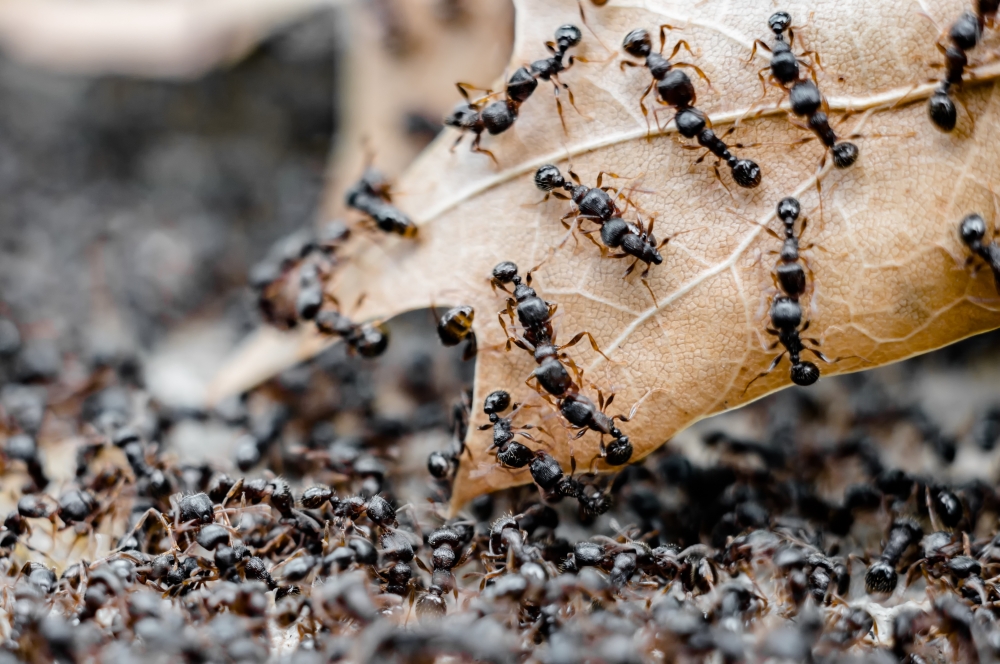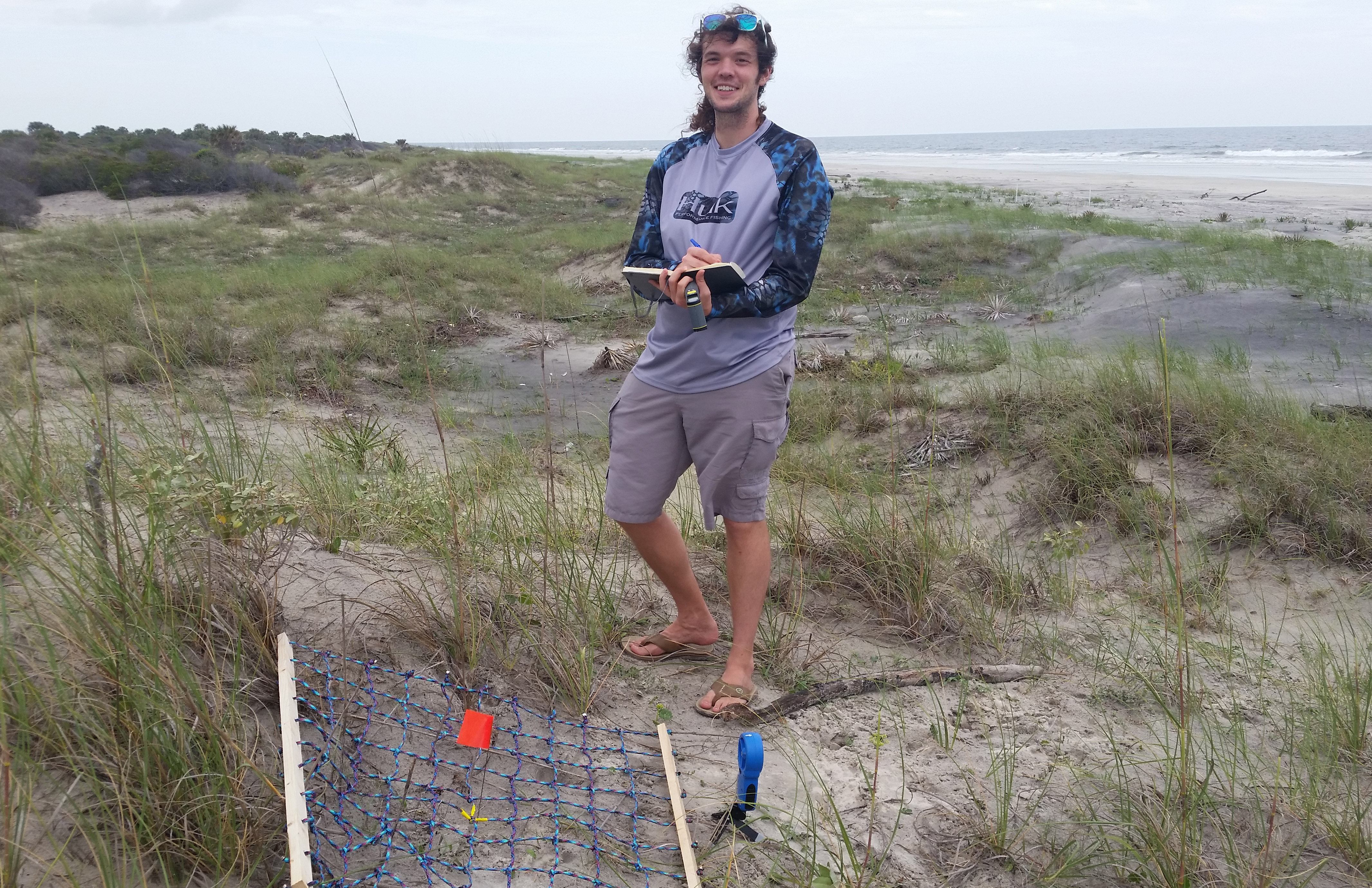
The Ants Go Marching

For many of us, it’s the heat and dryness that spark it. For others, it’s the new wetness of the first cool-weather rains. Either way, it’s likely you were witness to the invasion.
It began as a trickle, one or two of them just poking around. We barely noticed, not until the trickle became a parade and then a full-on swarm. Before we knew it, they had advanced upon our houses, laid siege to our countertops, plundered our pets’ dishes or raided our fancy sugar scrub. We sprayed them with products from essential oils to industrial-strength poisons, but our resistance was futile. Within a few days — or even hours — they returned through cracks and airspaces, bringing hundreds if not thousands of their friends, as we obsess over every crumb and wrap our leftovers in layers of plastic.
For the Argentine ants, it’s just another day.
“Their whole strategy is just to overwhelm everything,” said Charlie Braman, a researcher in UC Santa Barbara Marine Science Institute professor Tom Dudley’s lab. Venomless and stingless, these ants are nevertheless persistent and effective in their efforts to colonize new territory, often in search of water, which brings many of us in contact with them over the hotter months of the year.
It doesn’t help that here in coastal California we have for decades been sitting on a 560-mile-long Argentine ant supercolony, leaving us with the unsettling notion that the hordes we see are only a tiny fraction of a population that has been growing under our feet for about a century. First thought to have arrived in the United States in 1891, the ants — native to the region of Panama, Paraguay and Argentina — were first sighted in California in 1907 and have waged a quiet war for domination ever since.
“Argie ants are aggressive, and tend to displace the more benign native ants which are being wiped out in much of California,” said Dudley, who studies the impacts of invasive species in the local region. While native ants live and work within their ecological niche — for instance, California harvester ants aerate the soil with their seed-burying activities — Argies, as Dudley likes to call them, are more likely to destroy that niche with a strategy of sheer number and thuggish competition for resources.
In the summer and fall, Dudley said, the Argentine ants get thirsty. “The surrounding landscape gets increasingly dry so ants come for moisture … and food, of course,” he said. “They also tend to set up new colonies in the later part of the season, so will be out exploring more.”
While Argies aren’t known to directly cause the death of organisms that cross their paths, their activities are deleterious to the community in more insidious ways. For instance, their colonization activities don’t merely disrupt the local natural ecology by displacing native ants that are the preferred food of some native lizards — they also encourage plant pests.
“Argentines in particular increase the abundance of aphids,” Braman said, explaining that the ants will actually “farm them like cows” — protecting the aphids as they suck sap from plants, which they then process into a sugary substance the ants subsequently ingest. “Usually when they move into an area they can actually alter the plant community,” he added.
As significant as the Argentine ant invasion is — and there is no shortage of research on the topic — it is the more recent arrival of fire ants that piques Braman’s interest. Coming from the same region of the world as Argentines, fire ants may be less in number but have at their disposal a venomous sting that can range from very annoying to potentially deadly, for those who are allergic.
“We know that the first introduction happened at the Port of Mobile,” Braman said of an event that occurred sometime in the 1930s. The fire ants are thought to have made it to California in the mid-1980s. Like their Argentine rivals, these fire ants (there are several types of stinging ants that fall under the “fire ant” designation) are opportunistic masters of adaptation, in fact seeking out areas of disturbed soil to colonize, such as roadways, areas of agricultural activity, riparian areas and yes, our lovingly manicured gardens. In other words, everywhere we like to be. Loose soils, Braman explained, are easier to move around than undisturbed dirt, and thus easier for mound-building ants.
The mounds are for more than just shelter, according to Braman. During the day, he said, the ants take their brood to the top of the mound, where the additional heat allows the larvae to develop faster. At night, where the depths of the colony are relatively warmer, the ants take their babies down. “So they’re actually engineering their own colony,” he said.
It isn’t just heat and aridity that push the ants into our homes, however. A good drenching can also cause increased ant-human interaction. But while Argentines might attempt to colonize our kitchens in search of food and shelter, it’s the fire ants that can become more of a pest after a good rain, redoubling their mound construction activities in the yard seemingly overnight. Bonus: They are capable of making themselves into floating rafts during floods, as many Texans can attest after Hurricane Harvey.
“They can handle flood conditions and that’s potentially one of the ways they actually get distributed once they’ve been introduced,” Braman said.
It’s an exciting time to be an ant scientist in California. With climate change resulting in increasingly extreme dry and wet weather, and the convergence of two rival invasive ant species, some big questions have emerged: How will the local ecology continue to shift in response to these ants? Will these ants, whose populations helped keep each other in check in their native lands, do the same here? And how do we control these insects, who seem in some ways to be better at living in urban environments than we are?
“It’s a little more complicated than just finding a mound and taking it out,” Braman said. Commercially-available baits are a more effective choice for eliminating the source of these ants than spot treatments, but even so, he said, we should be careful that we’re not just tipping the balance of power between one invasive species and another, while taking out natives in the process. The U.S. Department of Agriculture has been working to control the spread of the imported ants through quarantines and the development of biocontrol agents that affect only the invaders.
In the meantime, researchers like those in the Dudley Lab will continue to monitor the current situation with ecological surveys. Braman, undergraduate researcher Skylar Primavera from UCSB’s College of Creative Studies and colleagues are currently conducting studies on native and non-native ants at sites on the Santa Clara River in Ventura County. The team is exploring whether and how restoration of native riparian woodlands following removal of invasive plants can promote recovery of the whole native community of plants and animals.
Other UCSB researchers, such as those working with Katja Seltmann, director of UC Santa Barbara’s Cheadle Center for Biodiversity and Ecological Restoration, are attempting to reconstruct a picture of ant species diversity before the invasion, a project that will eventually involve citizen science to collect native ant records.



